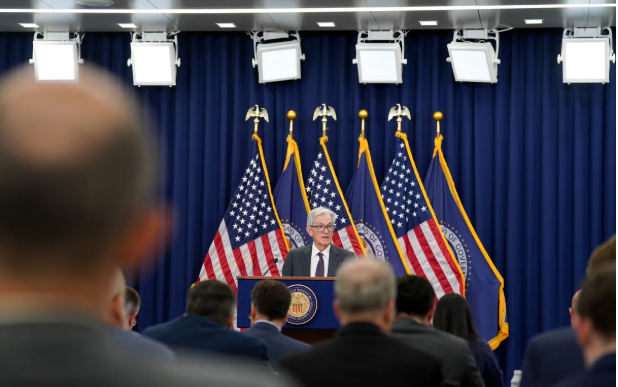Despite pressure from the White House, Federal Reserve Chair Powell rejected the arguments of two dissenting officials for a rate cut, insisting that the central bank needs to remain vigilant against inflation risks.
The Federal Open Market Committee voted Wednesday to keep interest rates unchanged. This is the fifth consecutive time the committee has voted to maintain rates at current levels. It is the first time in more than 30 years that two Federal Reserve governors have voted against the decision.
At the press conference following the Fed’s decision, Powell tended to believe that, given the ongoing uncertainty surrounding President Donald Trump’s tariffs and their economic impact, the Fed is currently well-prepared. His remarks were cautiously balanced, lowering expectations for a rate cut in September but not completely ruling out the possibility.

Powell said, “A reasonable baseline is that the impact on inflation could be transitory, reflecting a one-off change in the price level, but the inflationary impact could also be more persistent – this is a risk that needs to be evaluated and managed.”
The chairperson of the Federal Reserve pointed out that several economic reports will be released before the September meeting, including two months’ worth of employment and inflation data.
He said, “We will consider this information and all the other information we have obtained at the meeting in September and make a decision.”
Investors were eager for a signal from officials that they might cut interest rates at the next meeting when the market opened that day. Powell’s remarks triggered a sell-off of US Treasuries, and the dollar rose to its highest level since May. The S&P 500 index fell.
Interest rate futures indicate that traders have lowered the probability of a rate cut in September from around 60% before the decision to about 40%.
Claudia Sahm, chief economist at New Century Advisors and a former Federal Reserve economist, said that Powell maintained a neutral stance, which indicates that officials still need to know more about the economy before taking action.
“They need more data to resolve their differences, and that takes time,” Sam said. “It might simply be that they want to keep all options open for now.”
Trump’s imposition of new tariffs on dozens of US trading partners has brought uncertainties to the economic outlook and the policy considerations of the Federal Reserve. The Trump administration has been negotiating trade agreements with multiple countries before the August 1 deadline and has reached significant agreements with Japan and the European Union.
Powell said of the negotiations: “We still have a long way to go before we see stability.” “Yes, we are learning more and more. It feels like we are still far from the end of this process,” he added.
June’s consumer inflation data indicated that businesses began to pass on some of the tariff-related costs to consumers more effectively. Powell suggested that the Fed “could slightly ease commodity inflation by not raising interest rates.”
Looking ahead, he said, policymakers will ensure that tariffs do not lead to “severe inflation”. He also said that policymakers’ goal is to strike a balance between cutting interest rates too early and too late. Cutting rates too early could prevent inflation from reaching the Fed’s 2% target, while doing so too late could harm the labor market.
“We are working hard to achieve this goal in an efficient way,” Powell said. “But ultimately, there is no doubt that we will take the necessary measures to control inflation.”
In a report to clients, analysts at Bank of America said, “The key word today is ‘efficiency’: Keeping interest rates unchanged is more efficient than cutting them prematurely and then having to raise them again.”
Trump has been insisting on lowering interest rates all year, including earlier on Wednesday.
Since the Federal Reserve’s last meeting in June, two Trump-appointed governors, Christopher Waller and Michelle Bowman, have laid the groundwork for their dissents, outlining the reasons for a rate cut at this week’s meeting.
Baumann pointed out that there are signs of fragility in the labor market, while Waller said that the slowdown in private sector employment also indicates potential weakness in the U.S. job market.
Powell said Wednesday that policymakers will keep an eye on the “obvious” downside risks to the labor market. But he said the labor market is performing well and that the Fed is closer to achieving its full employment goal than its 2% inflation target.
This means that policy should be tightened, as tight policy is the key to lowering inflation, he said. “If you think the risks are more balanced, that means policy should not be overly strict.”
James Knightley, chief international economist at ING, said these views represent different perspectives on the urgency of the situation the Federal Reserve is facing.
“It’s more a matter of timing than a pure disagreement,” Knightley said. “Chairman Powell is considering the issue, but he doesn’t think the urgency to act is that great.”


